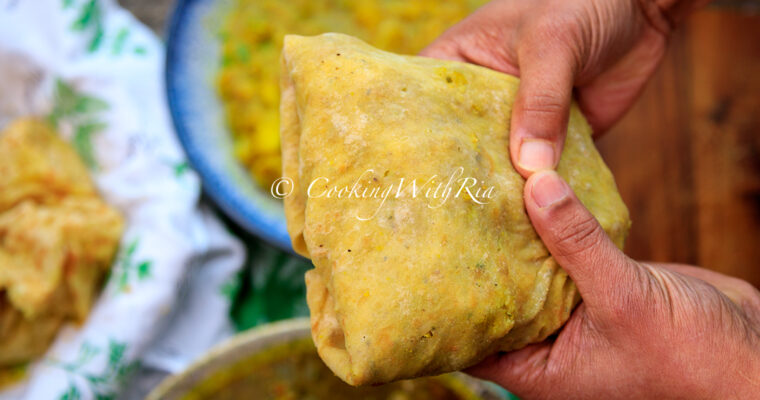Trinidad, the larger of the two islands that make up Trinidad and Tobago, is home to several key towns and cities that serve as the country’s economic, cultural, and political hubs. Each has its own distinct character and plays a vital role in the nation’s development. Below is an overview of the main towns and cities in Trinidad:
1. Port of Spain
Role: Capital City
Population: Approx. 37,000 (2011)
Port of Spain is the capital of Trinidad and Tobago and serves as the main economic, administrative, and cultural center. The city is the hub of government activity, housing the President’s House, the Parliament, and key ministries. It’s also the center for business, with many banks, corporations, and embassies situated here.
Key Attractions:
- Queen’s Park Savannah: A large open space often used for Carnival celebrations.
- National Academy for the Performing Arts (NAPA): Cultural performances and concerts.
- The Magnificent Seven: A row of historic mansions reflecting colonial architecture.
Cultural Significance: Port of Spain is the heart of Trinidad’s famous Carnival celebration, attracting visitors from all over the world for this vibrant festival. It is also a key location for cultural events, such as calypso and soca performances.
2. San Fernando
Role: Industrial Hub
Population: Approx. 50,000 (2011)
Located in the southwestern part of Trinidad, San Fernando is the country’s second-largest city. It is a major center for Trinidad’s petrochemical and oil industries, given its proximity to the oil-rich areas in southern Trinidad.
Key Attractions:
- San Fernando Hill: A historical and cultural site offering panoramic views of the city.
- Pointe-à-Pierre Wildfowl Trust: A conservation area for endangered bird species.
Economic Importance: As the industrial capital, San Fernando has many refineries and related industries, making it a crucial player in Trinidad’s oil and gas sector. The city is also known for its retail businesses, contributing to the national economy.
3. Chaguanas
Role: Commercial Center
Population: Approx. 83,000 (2011)
Chaguanas, located in the central region of Trinidad, is the fastest-growing town and now the most populous municipality in the country. It has become a bustling commercial hub due to its strategic location and growing real estate developments.
Key Attractions:
- Chaguanas Market: A popular spot for fresh produce and local goods.
- The Divali Nagar Site: Known for hosting the Divali Nagar Festival, celebrating Hindu culture in Trinidad.
Growth and Development: Over the past few decades, Chaguanas has transformed from a rural town into a thriving urban area, attracting businesses, shopping malls, and educational institutions. The town has a large Indo-Trinidadian population, and it is a center for Hindu festivals and activities.
4. Arima
Role: Eastern Trading Hub
Population: Approx. 33,000 (2011)
Located in the eastern part of Trinidad, Arima is known for its strong connection to the island’s First Peoples (the indigenous Caribs). It is also the key town in the east, providing access to many rural and forested areas.
Key Attractions:
- Santa Rosa Festival: A celebration of indigenous heritage.
- Arima Velodrome: A sporting facility primarily used for cycling and football.
Cultural Significance: Arima holds a prominent place in honoring the indigenous heritage of Trinidad, with festivals and celebrations dedicated to the First Peoples. It also plays a role in eastern Trinidad’s trading and commercial activities.
5. Point Fortin
Role: Energy Sector Town
Population: Approx. 20,000 (2011)
Point Fortin is located on the southwestern tip of Trinidad and is another important town for the country’s oil and natural gas industry. The town has seen development due to the nearby oil fields and is home to several large energy companies.
Key Attractions:
- Point Fortin Borough Day: A local festival celebrating the town’s cultural and economic contributions.
- Oilfields of Trinidad: Tours highlighting the town’s role in the energy sector.
Economic Significance: Point Fortin’s economy is largely dependent on the petroleum industry, and many of its residents work in the oil and gas sector. It is considered one of the energy capitals of Trinidad and Tobago.
6. Sangre Grande
Role: Gateway to the East
Population: Approx. 20,000 (2011)
Sangre Grande is the largest town in northeastern Trinidad and is often called the gateway to the eastern part of the island. The town serves as a major agricultural hub, with many farms producing crops such as citrus fruits and cocoa.
Key Attractions:
- Matura Beach: A key nesting site for leatherback turtles.
- Toco Lighthouse: A historical landmark offering scenic views of the Atlantic Ocean.
Economic Importance: Sangre Grande plays a critical role in Trinidad’s agricultural economy, supplying produce to markets across the island. Its proximity to eco-tourism sites makes it a popular destination for nature lovers.
7. Tunapuna
Role: Suburban Hub
Population: Approx. 75,000 (2011)
Tunapuna is a rapidly growing town located in the East-West Corridor, an area that stretches from Port of Spain to Arima. It serves as a major residential and commercial area, with a variety of shops, schools, and restaurants.
Key Attractions:
- Maracas Falls: A popular hiking destination.
- Tunapuna Market: A bustling local market for fresh produce and goods.
Cultural and Economic Role: Tunapuna is a dynamic blend of suburban living and commercial activity. Its central location makes it a key part of daily commute for those working in nearby cities, contributing to the area’s economic growth.
8. Couva: The Growing Industrial Town of Trinidad
Couva, where I lived while growing up in Trinidad, is located on the west-central coast of Trinidad, has grown significantly over the past few decades and is now one of the most important towns in the country. It plays a crucial role in Trinidad and Tobago’s industrial and agricultural sectors, and is also home to a number of recreational and cultural attractions.
Economic Role
Couva has long been known for its contribution to agriculture, particularly in the cultivation of sugarcane during the colonial era. After the decline of the sugar industry, the town transitioned into an industrial hub, with petrochemical plants, oil refineries, and other energy-related industries now driving its economy.
The town’s proximity to the Point Lisas Industrial Estate makes it a key player in Trinidad’s industrial output. Point Lisas is one of the largest industrial estates in the Caribbean and hosts several major industries, including the production of ammonia, methanol, urea, and steel. Couva benefits directly from this industrial activity, with many of its residents employed in these sectors.
Key Attractions
- Ato Boldon Stadium: Named after one of Trinidad and Tobago’s most celebrated athletes, this stadium in Couva hosts major sporting events and is home to various football teams. It is also used for athletic training and competitions.
- The Couva River and Orange Valley: These areas offer scenic views and have a rich history related to fishing and local agriculture. Orange Valley, in particular, is known for shrimp harvesting.
Agriculture
Though Couva has developed into an industrial town, agriculture remains part of its identity. The area still produces fruits, vegetables, and poultry, contributing to the local markets. Additionally, Brechin Castle, a sugar factory that operated until the 2000s, was once a vital part of the area’s sugar industry. Its closure marked a significant shift from agriculture to industrial development.
Cultural Importance
Couva has a diverse population, with residents of African, Indian, and mixed heritage living in harmony. This diversity is reflected in the cultural celebrations, including the annual Divali celebrations, which are significant in areas with large Indo-Trinidadian populations.
The town is also an important center for sports in Trinidad and Tobago. Apart from the Ato Boldon Stadium, Couva’s National Aquatic Centre and National Cycling Velodrome are state-of-the-art facilities that serve athletes from across the country.
Educational and Healthcare Infrastructure
Couva boasts several important institutions, such as Couva West Secondary School and the Couva Hospital and Multi-Training Facility, which was opened in 2019. The hospital is one of the most modern medical facilities in the Caribbean and serves both the local population and people from neighboring towns and villages.
Couva is a dynamic town in Trinidad that continues to grow in both industrial and agricultural capacities. Its strategic location near the Point Lisas Industrial Estate ensures that it remains a vital part of the nation’s economy, while its cultural diversity and recreational facilities make it an attractive place to live and visit. Couva represents the changing face of Trinidad, balancing industrial progress with rich cultural traditions and a commitment to community development.
Conclusion
The main towns and cities in Trinidad each play unique roles in the island’s social, economic, and cultural landscape. From Port of Spain’s bustling urban center to the industrial might of San Fernando and the growing commercial hub of Chaguanas, these municipalities together form the backbone of Trinidad and Tobago’s development. Their contributions, both individually and collectively, reflect the diversity and richness of the country.










